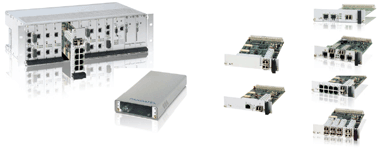
ETC series products offer Ethernet solutions for first and last mile applications. Traditionally service providers need to use 2 types of equipment for transport and for service delivery. With ETC series products, transport and service delivery functions are accomplished with the same equipment. Transport
Uplink with 100 Mbps or 1 Gbps fiber interfaces are offered to connect to service provider’s IP networks. Flexible SFP transceivers are used to allow transport distance up to 80 km without repeater. Service interfaces can be either copper or fiber SFPs, enabling customer connectivity from a few meters to tens of kilometers. Service Delivery
Besides standard transport features, ETC products incorporate Ethernet service delivery functions, such as:
1. Carrier Class Service offering Tamper proof bandwidth limitation per port (ingress & egress) Separating user traffic by adding a P-VLAN tag Single and double VLAN tagging (Q-in-Q) per port according to IEEE802.1Q C-VLAN is transported transparently Priority marking according to IEEE802.1p Port-based & VLAN-based priority High reliability
2. Selectable (Rapid) Spanning Tree Support according to IEE802.1D/w
3. Ethernet Automatic Protection Switching (EAPS) according to RFC3619, recovering link failure <50msec Ethernet Manageability
Latest Ethernet management standard for first mile (EFM) per 802.3ah is also supported. Ethernet First Miles (EFM) means that ETC products can be connected to third party switches, and service providers are able to mange our products from the switch without assigning IP address for the ETC. The EFM functions allow following:
1. Self Discovery - ETC products can be monitored through the 3rd party switch
2. Remote Fault Detection (RFD) - the ETC product will send a trap via 802.3ah OAM to the head end switch when it detects a fiber cut on its incoming fiber RX port
3. Link Pass Through - ETC sends a trap via 802.3ah OAM to head end switch when it detects the local UTP port is down or cable is removed. It also shuts down its own fiber transmitter port
4. Optical Link Performance Monitoring. Available Models ETC-A12 | Uplink FE
| Service: 4 copper FE 100 Mbps
| Upline: 2 fiber SFP 100 Mbps |  | ETC-A24 | Uplink FE
| Service: 8 copper FE 100 Mbps
| Line: 2 fiber SFP 1 Gbps |  | ETC-B28 | Uplink GE
| Service: 6 fiber SFP 100 Mbps
| Line: 2 fiber SFP 1 Gbps |  | ETC-B26 | Uplink GE
| Service: 1 fiber SFP 100 Mbps
| Line: 1 fiber SFP 1 Gbps | 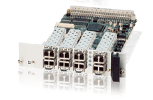 | ETC-B20 | Uplink GE
| Service: copper 100 Mbps
| Line: 1 fiber SFP 1 Gbps |  | ETC-B11 | Uplink GE
| Service: copper 100 Mbps
| Line: 1 fiber SFP 1 Gbps |  |
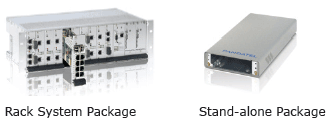
Packaging
Each ETC model is a 3U card that can be either plugged into a 19” rack system chassis for POP application, or a stand-alone chassis as a customer premises equipment.
Density:
Stand-alone RA-T-V per chassis
U rack RA-U up to 10 cards per chassis
6U rack RA-HD up to 24 cards per chassis Management
User can easily integrate the ETC into MACS platform, with 19” racks or stand-alone unit, to a higher level network management through standard based SNMP, or web based graphic user interface “MACS View”. In-band Management - Best of Know-How
While other vendors require LAN access or optical supervisory channels in order to manage remotely located equipment, ETC products have built-in In-Band Remote Management without the need for LAN access or optical supervisory channels. In-Band management is achieved through carrying management information based on IP forwarding. This allows to monitor and to supervise remote equipment, especially useful for the equipment located at customer premises.
Example 1:
Protected Gigabit Ring with ETC-B for Customer Buildings and Wireless
Base Stations
Example 2:
Single Fiber Service Delivery for Multi-Tenants– Simpler and Lower OPEX than PON Examples of Applications 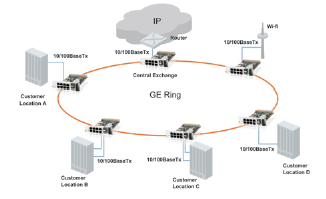
Example 1:
Protected Gigabit Ring with ETC-B for Customer Buildings and Wireless Base Stations 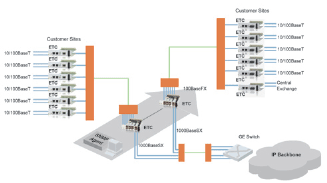
Example 2:
Single Fiber Service Delivery for Multi-Tenants– Simpler and Lower OPEX than PON | 









